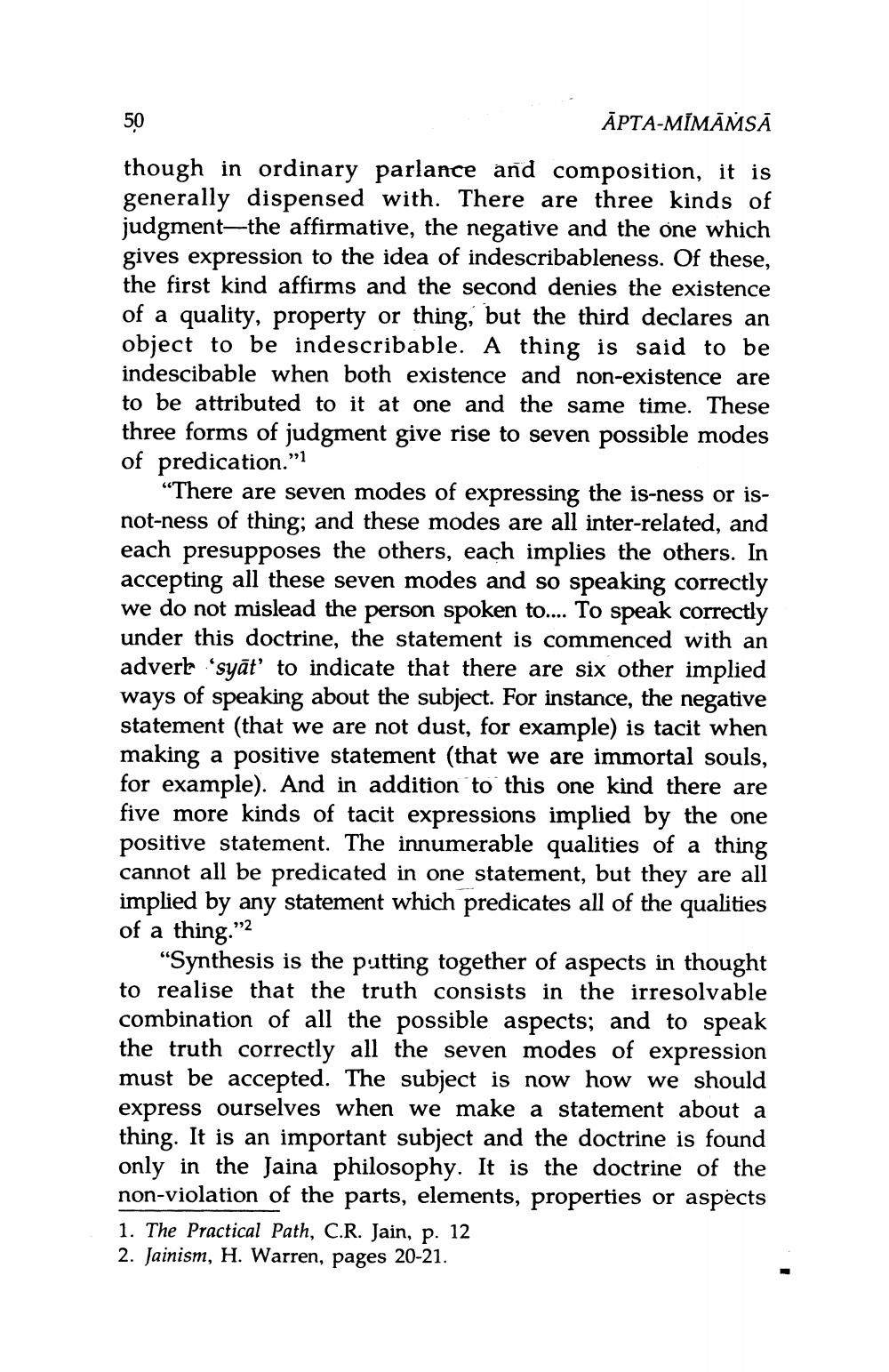________________
50
APTA-MĪMĀMSA
though in ordinary parlance and composition, it is generally dispensed with. There are three kinds of judgment—the affirmative, the negative and the one which gives expression to the idea of indescribableness. Of these, the first kind affirms and the second denies the existence of a quality, property or thing, but the third declares an object to be indescribable. A thing is said to be indescibable when both existence and non-existence are to be attributed to it at one and the same time. These three forms of judgment give rise to seven possible modes of predication."1
“There are seven modes of expressing the is-ness or isnot-ness of thing; and these modes are all inter-related, and each presupposes the others, each implies the others. In accepting all these seven modes and so speaking correctly we do not mislead the person spoken to.... To speak correctly under this doctrine, the statement is commenced with an adverk 'syāt to indicate that there are six other implied ways of speaking about the subject. For instance, the negative statement (that we are not dust, for example) is tacit when making a positive statement (that we are immortal souls, for example). And in addition to this one kind there are five more kinds of tacit expressions implied by the one positive statement. The innumerable qualities of a thing cannot all be predicated in one statement, but they are all implied by any statement which predicates all of the qualities of a thing.”2
“Synthesis is the putting together of aspects in thought to realise that the truth consists in the irresolvable combination of all the possible aspects; and to speak the truth correctly all the seven modes of expression must be accepted. The subject is now how we should express ourselves when we make a statement about a thing. It is an important subject and the doctrine is found only in the Jaina philosophy. It is the doctrine of the non-violation of the parts, elements, properties or aspects 1. The Practical Path, C.R. Jain, p. 12 2. Jainism, H. Warren, pages 20-21.




